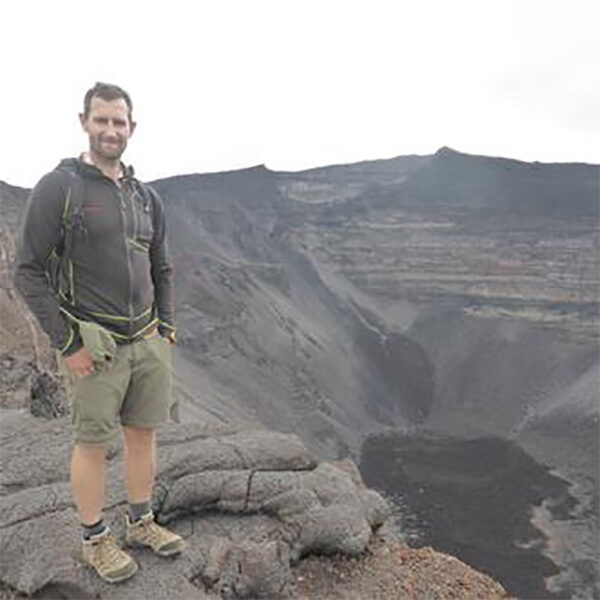Reader, School of Earth and Environmental Sciences
Biography
I am a petrologist whose research focuses on the magmatic and metamorphic processes that have shaped the evolution of Earth’s lithosphere, and the development of its metal resources, from the Archaean to the present day. My current research focus broadly divides into two areas:
- Archaean geodynamics and magmatism. With colleagues, I apply geochemical and isotopic techniques to mafic and evolved rocks to understand (a) settings of crust production on the early Earth; and (b) the nature and timescales of craton assembly and stabilization. I have worked in Western Australia, West Greenland and South Africa. I have also investigated linking isotopic and trace element modelling to phase equilibria modelling, to understand the nature of isotopic evolution during partial melting processes.
- Processes leading to the development of magmatic-hydrothermal mineralization, with an emphasis on lithophile deposits. I am particularly interested in the use of accessory mineral chemistry to understand the evolution of magmatic systems before and during vapour saturation, and to trace the mobility of metals of interest.
I am a PI of the StAIG isotope labs, principally focusing on laser ablation MC-ICP-MS (U-Pb, Hf in zircon) for broad crustal evolution research , and I have over 10 years experience in stable and radiogenic laser ablation mass spectrometry.
Member of St Andrews Planetary Geodynamics Research Group
I worked for nearly a decade in the global commodities markets, and retain an interest in how developing nations can sustainably exploit their natural mineral resources, with recent work in Myanmar and Rwanda.
I am the Theme Leader for the Geological Society’s “Energy Transition” theme.
Selected publications
North Atlantic Craton architecture revealed by kimberlite-hosted crustal zircons, Gardiner, N. J., Kirkland, C. L., Hollis, J. A., Cawood, P. A., Nebel, O., Szilas, K. & Yakymchuk, C., 15 Mar 2020, In: Earth and Planetary Science Letters. 534, 116091.
Modelling the hafnium-neodymium evolution of early Earth: a study from West Greenland, Gardiner, N. J., Johnson, T. E., Kirkland, C. L. & Szilas, K., Jan 2019, In: Journal of Petrology. 60, 1, p. 177-197 21 p.
Building Mesoarchaean crust upon Eoarchaean roots: the Akia Terrane, West Greenland, Gardiner, N. J., Kirkland, C. L., Hollis, J., Szilas, K., Steenfelt, A., Yakymchuk, C. & Heide-Jørgensen, H., Mar 2019, In: Contributions to Mineralogy and Petrology. 174, 20.
An impact melt origin for Earth’s oldest known evolved rocks, Johnson, T. E., Gardiner, N. J., Miljković, K., Spencer, C. J., Kirkland, C. L., Bland, P. A. & Smithies, H., Oct 2018, In: Nature Geoscience. 11, 10, p. 795-799 5 p.
Melting controls on the lutetium–hafnium evolution of Archaean crust, Gardiner, N. J., Johnson, T. E., Kirkland, C. L. & Smithies, R. H., Feb 2018, In: Precambrian Research. 305, p. 479-488 10 p.
Processes of crust formation in the early Earth imaged through Hf isotopes from the East Pilbara Terrane, Gardiner, N. J., Hickman, A. H., Kirkland, C. L., Lu, Y., Johnson, T. & Zhao, J. X., Aug 2017, In: Precambrian Research. 297, p. 56-76 21 p.
Earth’s first stable continents did not form by subduction, Johnson, T. E., Brown, M., Gardiner, N. J., Kirkland, C. L. & Smithies, R. H., 9 Mar 2017, In: Nature. 543, 7644, p. 239-242 4 p.




